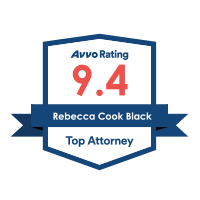Employers and foreign nationals alike often operate under the mistaken belief that their company must file for the H1B non-immigrant visa petition before they can start the PERM process for the foreign national to get his/her/their green card. Typically, the foreign national starts working for the sponsoring company while they are doing their OPT (Optional Practical Training) with employment authorization after they have graduated from college. Then the sponsoring company would file for the H1-B visa on behalf of the foreign employee based on that bachelor’s or master’s degree. If the employee is approved, then they usually have their non-immigrant employment visa for the next three years. Once the employee has their H1-B visa or after applying for the renewal, THEN they start the PERM Labor certification process for the green card.
There Could Be Challenges
There are several challenges with this process if the employer is subject to the quota cap for H1-B visas. There are 65,000 visas available annually with another 20,000 reserved for those with master’s degrees. Since the end of the last recession, these quotas have been oversubscribed by 200,000+ applicants, meaning it is a lottery to obtain one.
While the government filing fees are returned in the event of non-acceptance in the lottery, attorney fees are not. Although in the past, if the employer’s and the applicant’s credentials made sense, the H1-B would be approved, under the current administration, all H1-B cases have been undergoing a great deal of scrutiny and an arduous RFE (Request for Evidence) process to eliminate cases. For instance, the current administration challenges the concept that an entry-level job with the requirement of a bachelor’s degree is in fact a professional position that is acceptable under the H1B program. And while non-profits affiliated with a university are not subject to the quota cap, they are still subject to the current administration’s scrutiny.
Given the challenges old and new with the H1-B process, some companies are opting to go straight to the labor certification process or PERM to directly sponsor the person for the green card. The educational and/or experiential requirements for a PERM position can be as simple as two years of experience in a position, or a degree relevant to the position.
The applicant MUST have met the required experience or educational qualification at the time of the company filing for certification. So, if the candidate has a foreign degree or two years’ experience that is relevant to the job’s normal requirements, but is here studying under the F1 visa, the company could sponsor the candidate based on the candidate’s foreign experience. Once the company is certified by the Department Of Labor that it cannot find a qualified US citizen or permanent resident to fill the position, the company then needs to file the immigrant petition for an alien worker and the alien is eligible to file for their green card. Of course, this is not necessarily true for all candidates, it depends partially on the country of origin and if that country’s applicants are subjected to an immigrant quota under the visa bulletin. However, for candidates not subject to a quota under the visa bulletin, it can take 1-1.5 years for the person to have their green card.
Frequently Asked Questions about H1B & PERM
FAQ 1: Who pays for the PERM process? Under current Department of Labor (DOL) Regulations, the employer must pay for the fees and advertising costs associated with the PERM application filed with the DOL. The attorney and government filing fees associated with the immigrant petition and the green card can be paid for by the employee.
FAQ 2: Can my family be included in the process? Yes, they would be eligible to adjust their status to permanent resident with the principal applicant or consular process their immigrant visa if they are outside of the US.
FAQ 3: Does the applicant have to be in a status to be eligible to adjust status here in the US? Yes, the applicant must be invalid non-immigrant status to be eligible to adjust status, unless they are grandfathered in under 245(i) with a labor certificate or valid immigrant petition filed on their behalf prior to April 30, 2001.
Summary
Given the current political climate and the difficulties in obtaining an H1-B visa, starting the PERM process to sponsor a foreign national for a green card may be the most expedient way to enable them to be employed by the company.
Are you facing challenges with the H1-B visa process? Do you want to explore alternative options for sponsoring a foreign national for a green card? Contact our immigration law firm today for expert guidance and assistance.







